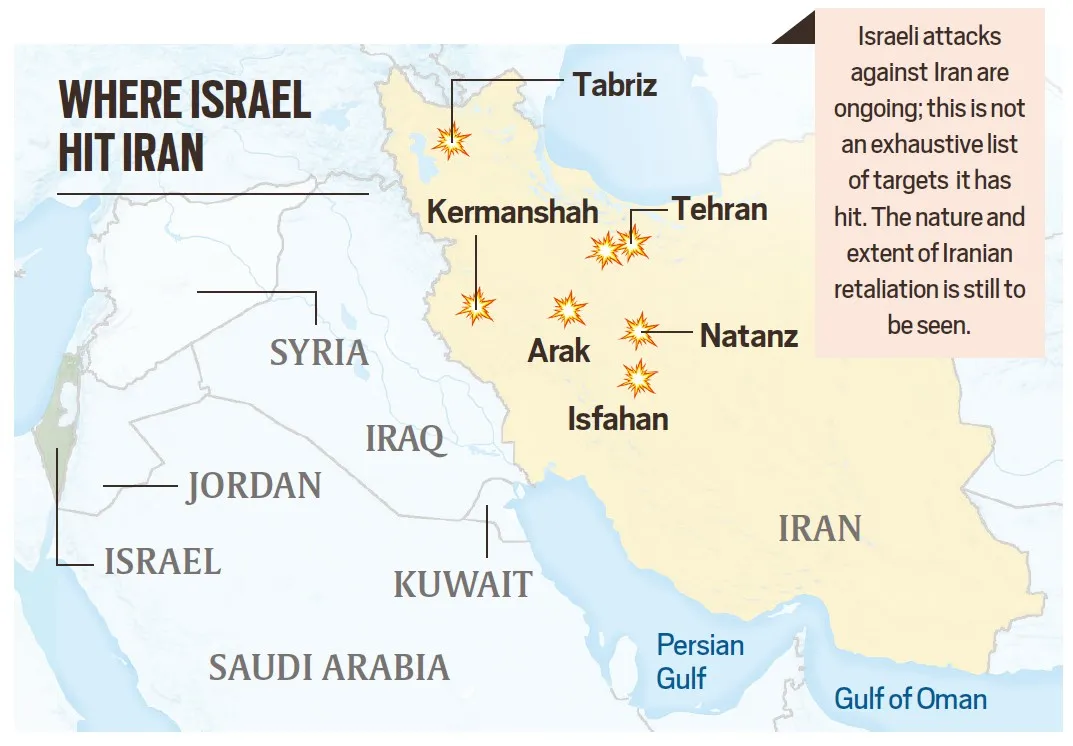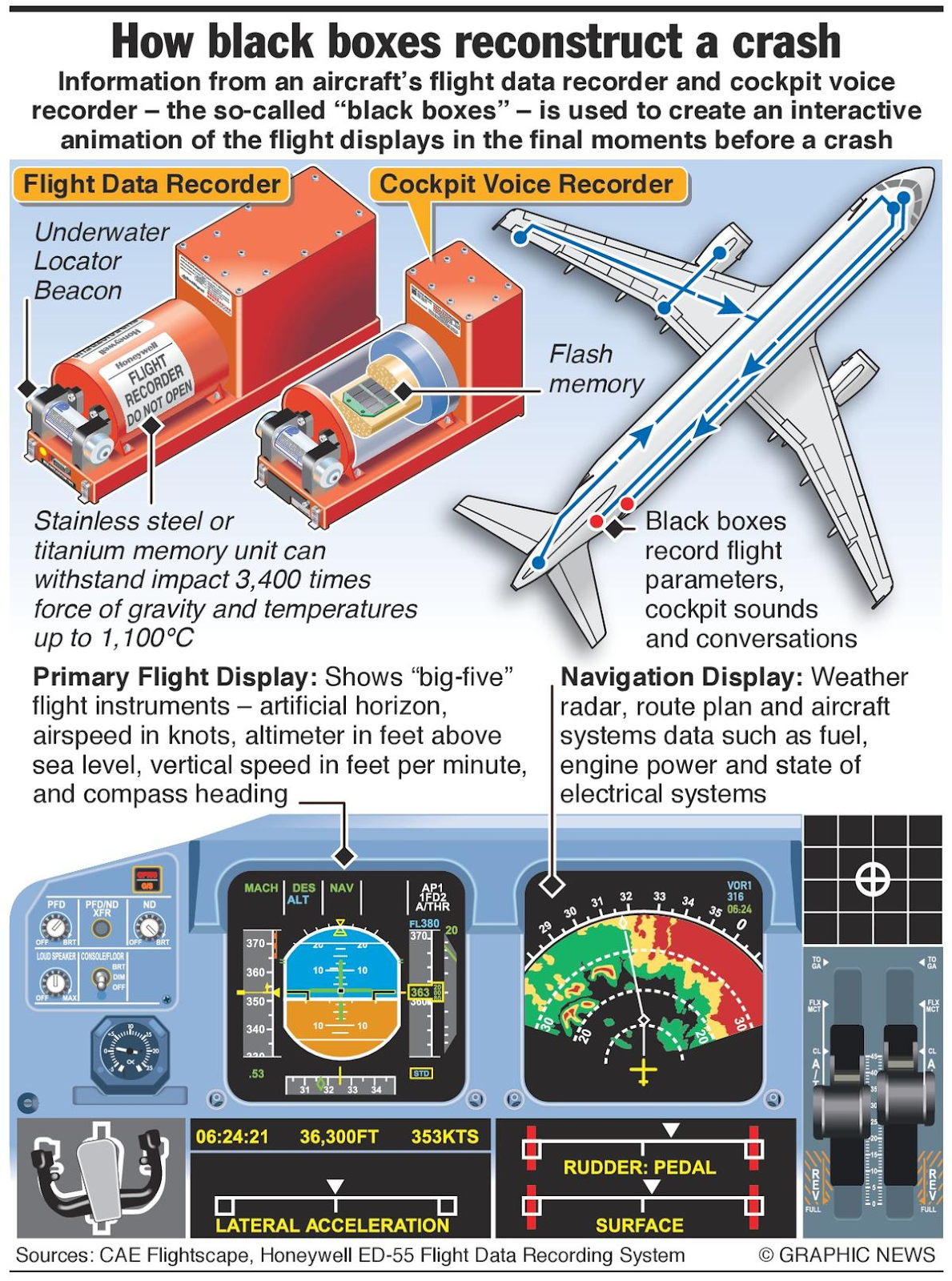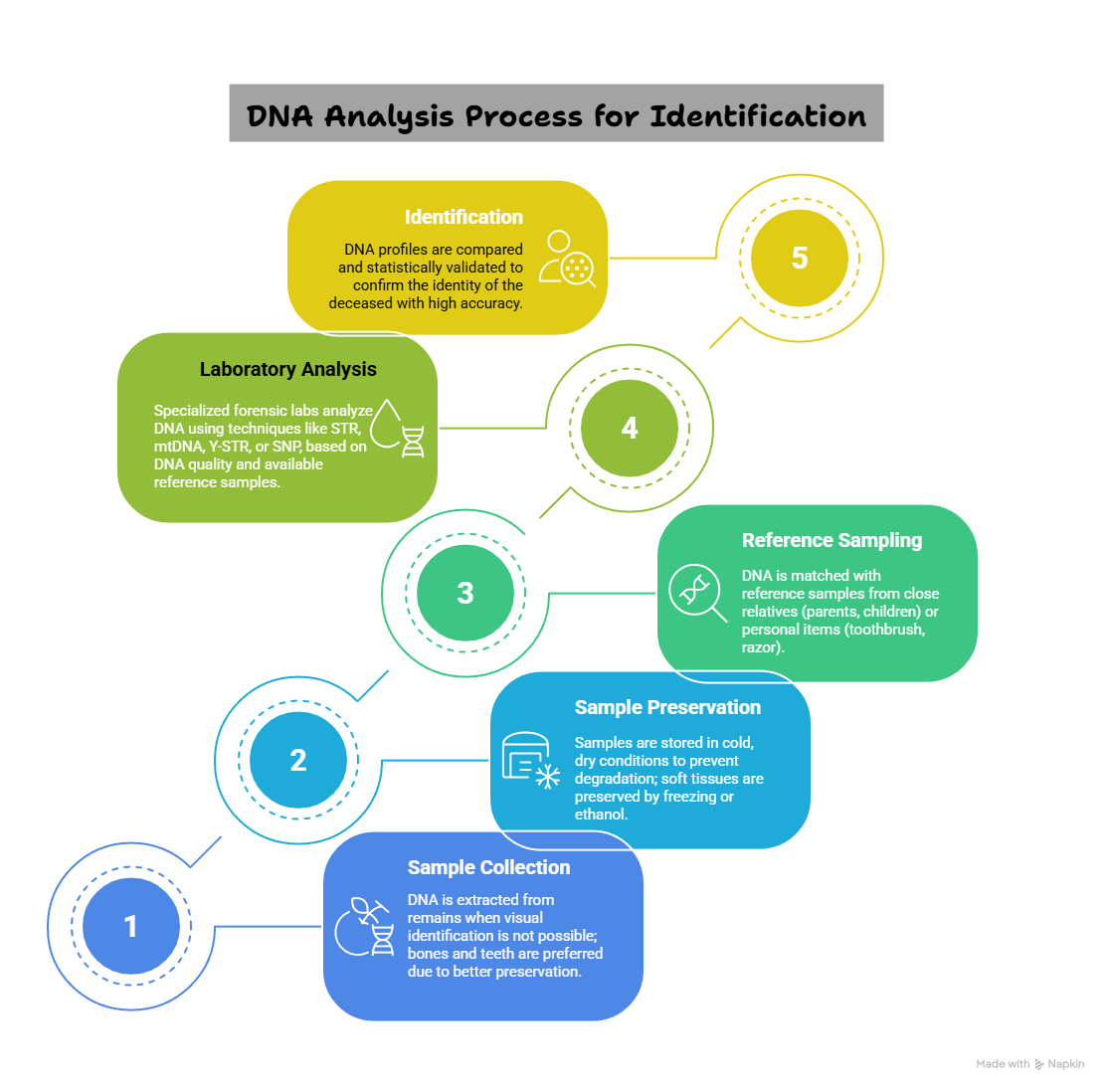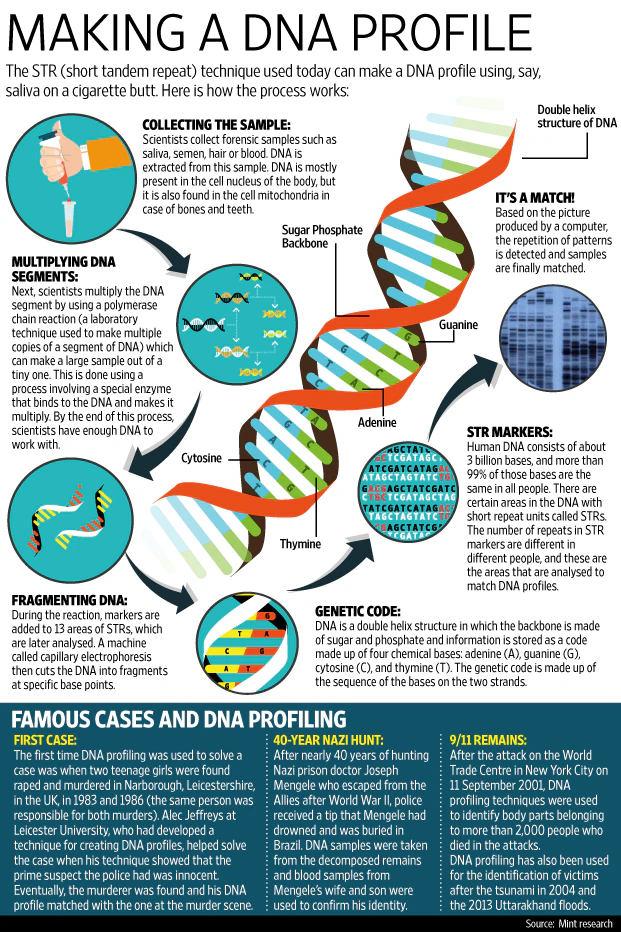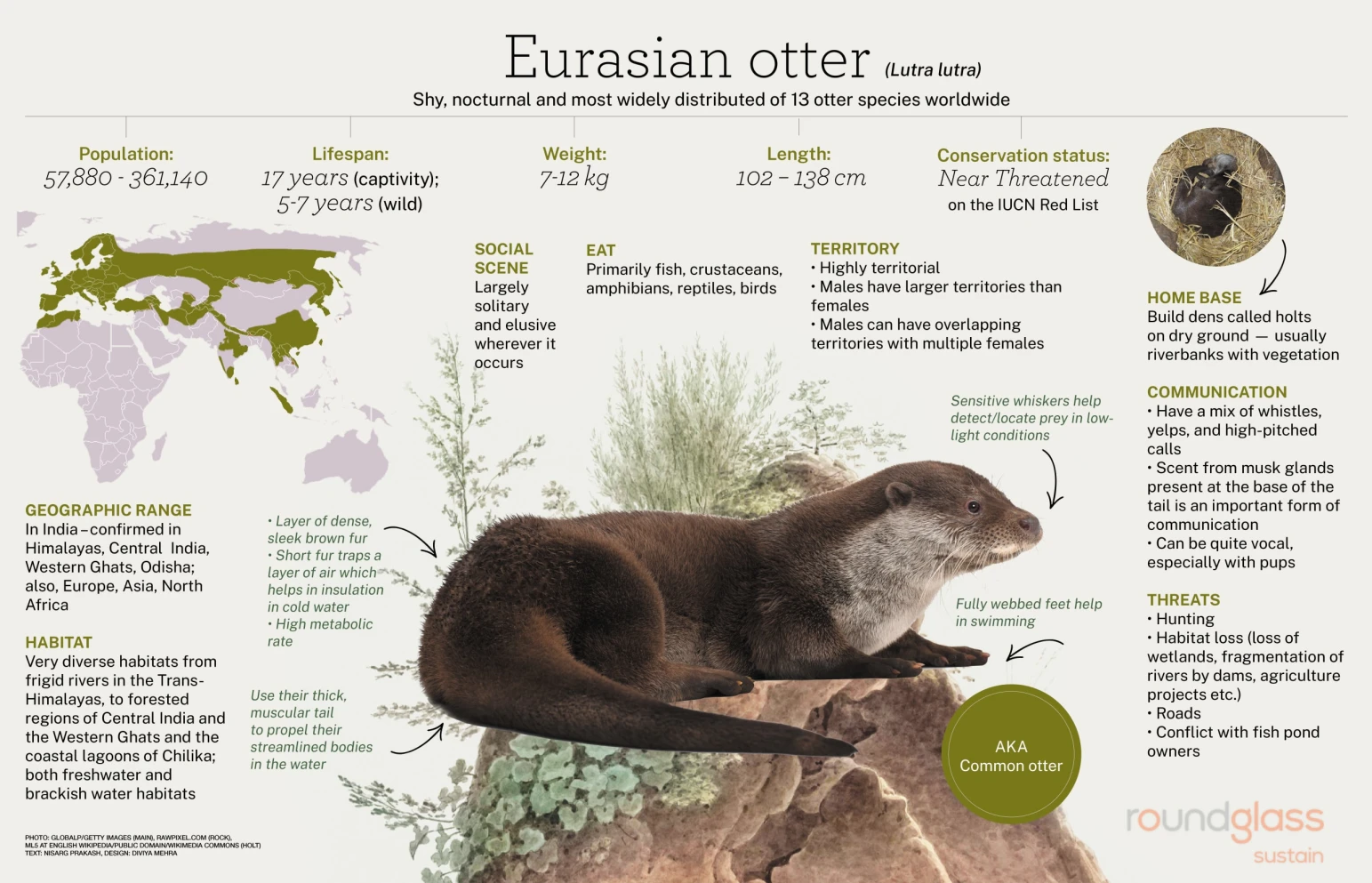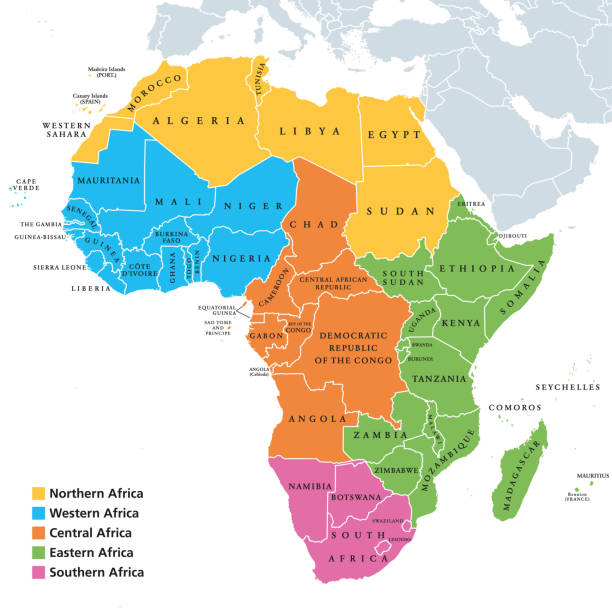International Relations
Iran-Israel Conflict
For Prelims: Joint Comprehensive Plan of Action, Strait of Hormuz, India-Middle East-Europe Economic Corridor (IMEC), Red Sea, Two-state Solution, European Union, United Nations, Gulf Cooperation Council (GCC).
For Mains: Historical background for reasons of conflict between Iran and Israel, Impact of Iran- Israel conflict on India and suggested measures to de-escalate tensions.
Israel, under “Operation Rising Lion”, launched airstrikes and drone attacks on Iran’s nuclear and military sites — including Tehran, the Natanz uranium enrichment facility, a nuclear research centre, two military bases in Tabriz, and an underground missile storage site in Kermanshah — to prevent Iran from advancing towards building an atomic weapon.
- In retaliation, Iran launched waves of ballistic missiles at Israel under “Operation True Promise 3”, causing explosions over Jerusalem and Tel Aviv.
What are the Reasons for the Iran-Israel Conflict?
- Historical Roots: The relationship between Iran and Israel has been marked by deep hostility since the 1979 Iranian Revolution, which transformed Iran from a close ally of Israel under the Shah to an Islamic Republic openly antagonistic towards the Jewish state.
- Religious and Ideological Divide: Iran, governed by Shia Islamic principles, and Israel, a predominantly Jewish state, are divided by stark religious and ideological differences.
- These fundamental disparities have fueled mutual distrust and animosity over the decades.
- Iran’s Support for Anti-Israel Groups: Iran has been a staunch backer of Palestinian causes, including providing support to Hamas and Hezbollah, both of which are labeled as terrorist organisations by Israel.
- The rivalry plays out through proxy conflicts, with Iran supporting forces such as Hezbollah in Lebanon and Shia militias in Iraq, all seen by Israel as direct threats to its security.
- Iran’s vocal calls for Israel’s destruction have further intensified tensions.
- Geopolitical Rivalry: Iran and Israel are locked in a struggle for regional dominance, with opposing interests in conflicts such as the Syrian civil war and the Yemen crisis.
- Iran backed the Assad regime in Syria and the Houthi rebels in Yemen, while Israel works to counter Iranian influence in these areas.
- Iran’s Nuclear Ambitions: Israel views Iran’s nuclear programme as a serious threat, fearing the development of nuclear weapons that could endanger its existence.
- Israel has been a fierce critic of the Iran nuclear deal (Joint Comprehensive Plan of Action) and has undertaken both overt and covert actions to disrupt Iran’s nuclear progress.
What are the Implications of the Iran-Israel Conflict on India?
- Hampering India’s Energy Security: For India, which imports nearly 2 million barrels of oil daily through the crucial Strait of Hormuz, any instability would mean supply shortages, spiraling energy costs, rising inflation, and constraints on economic growth.
- India is highly vulnerable to global oil price volatility; a sustained surge from regional conflict could trigger higher inflation, strain the fiscal balance, slow economic growth, and shift investor sentiment towards bonds and gold, as reflected in weaker Sensex and Nifty openings.
- Impact on Indian Diaspora: Over 66% of India’s 1.34 crore NRIs live in the Middle East, mainly in the UAE, Saudi Arabia, Kuwait, Qatar, Oman, and Bahrain. The large Indian diaspora in West Asia, especially the Persian Gulf, could face risks from regional tensions, making their safety a key priority for New Delhi.
- India has a history of conducting mass evacuations — notably during the Kuwait crisis (1990-91 Gulf War), and more recently from Libya and Ukraine.
- Disruption to Strategic Connectivity: India’s key connectivity projects like the Chabahar port in Iran, which links it to Afghanistan and Central Asia, could be affected by regional turmoil.
- The India-Middle East-Europe Economic Corridor (IMEC) faces risks from the conflict, threatening its progress and impacting bilateral trade and regional economic dynamics.
- Furthermore, shipping disruptions in the Red Sea and surrounding waters could cause delays, higher shipping costs, and lead to instability in global trade routes.
- Diplomatic Tightrope for India: India has built robust relations with Israel, especially in areas like defence, technology, and innovation. However, as tensions escalate, India could find itself in a challenging position, facing pressure to take sides — an outcome it would prefer to avoid.
- A worsening Israel-Iran conflict risks disrupting India’s delicate diplomatic balance, which it has effectively maintained over the past decade with Israel, Iran, and the Gulf Arab nations.
What Could be the Possible Solutions to De-escalate the Iran - Israel Conflict?
- Two-State Solution: Israel should move towards a sustainable ceasefire in Gaza, facilitate the flow of international humanitarian aid, and honour UN resolutions aimed at resolving the decades-old crisis through a two-state solution.
- This remains the most viable path for ensuring lasting security, peace, and stability in the region.
- A two-state solution envisions an independent Palestinian state alongside Israel, helping Israel safeguard its security and preserve its Jewish demographic majority, while granting statehood to the Palestinian people.
- This remains the most viable path for ensuring lasting security, peace, and stability in the region.
- Dialogue and Diplomacy: Direct engagement between Iran and Israel, with the support of neutral international mediators like the European Union or the United Nations, could pave the way for trust-building and meaningful negotiations to identify common ground.
- Tackling Nuclear Proliferation: Iran could recommit to the Joint Comprehensive Plan of Action (JCPOA), allowing international inspections to verify its compliance.
- In turn, Israel could acknowledge Iran’s right to peaceful nuclear energy and provide assurances against military strikes on Iranian nuclear facilities.
- Strengthening Regional Cooperation: Encouraging collaboration between Iran and Israel within regional forums — such as the Arab League or Gulf Cooperation Council (GCC) — could help address shared security challenges and promote regional stability.
- Steps Towards Normalisation: Iran and Israel could work towards normalising relations by exchanging ambassadors, reopening embassies, and fostering people-to-people connections, following the model of peace initiatives like those between Israel and the UAE or Bahrain.
Conclusion
The Iran-Israel conflict, rooted in historical, ideological, and geopolitical tensions, threatens regional stability and global security. For India, it poses risks to energy security, diaspora safety, and economic stability. Diplomatic solutions, nuclear non-proliferation, and regional cooperation are essential to de-escalate hostilities and ensure long-term peace in West Asia.
|
Drishti Mains Question: Analyze the impact of the Iran-Israel conflict on India’s strategic interests in West Asia, including connectivity projects like Chabahar Port and IMEC. |
UPSC Civil Services Examination, Previous Year Question (PYQ)
Prelims
Q. Mediterranean Sea is a border of which of the following countries? (2017)
- Jordan
- Iraq
- Lebanon
- Syria
Select the correct answer using the code given below:
(a) 1, 2 and 3 only
(b) 2 and 3 only
(c) 3 and 4 only
(d) 1, 3 and 4 only
Ans: (c)
Q. The term “two-state solution” is sometimes mentioned in the news in the context of the affairs of (2018)
(a) China
(b) Israel
(c) Iraq
(d) Yemen
Ans: (b)
Mains
Q. “India’s relations with Israel have, of late, acquired a depth and diversity, which cannot be rolled back.” Discuss. (2018)


Important Facts For Prelims
Bureau of Civil Aviation Security and India’s Aviation Sector
Why in News?
The Bureau of Civil Aviation Security (BCAS), under the Ministry of Civil Aviation, has cancelled the license of Celebi Aviation, a Turkish airport ground-handling firm operating at major Indian airports citing ‘national security concerns’.
- The move followed Turkey’s support for Pakistan after India’s Operation Sindoor, launched in response to the Pahalgam terror attack.
Legal Framework for Civil Aviation License
- Under the Aircraft Rules, 1937 (framed under the Bharatiya Vayuyan Adhiniyam, 2024), Rule 92 mandates government clearance for ground-handling agencies.
- Under Aircraft Security Rules, 2022 (Rules 11 & 12), the Director General, BCAS can suspend or cancel this clearance for non-compliance or national security concerns.
What is the Bureau of Civil Aviation Security (BCAS)?
- About: BCAS is the national regulator for civil aviation security in India headquartered at Delhi and headed by an officer of the rank of Director General of Police.
- Established: It was originally established as a cell within the Directorate General of Civil Aviation (DGCA in January 1978, following the recommendations of the Pande Committee, and was later reorganized as an independent department under the Ministry of Civil Aviation in 1987.
- The DGCA regulates air transport services to, from, and within India. It also enforces civil air regulations, air safety, and airworthiness standards.
- Key Functions: It sets aviation security standards aligned with Annex 17 to the Chicago Convention of International Civil Aviation Organization (ICAO), oversees implementation and training, and conducts surprise checks and mock drills to ensure preparedness and vigilance at airports.
What is the ICAO & Chicago Convention?
- The International Civil Aviation Organization (ICAO) is a specialized UN agency established by the Chicago Convention in 1944 to regulate global civil aviation.
- It sets international standards and procedures for the safe, secure, efficient, and environmentally sustainable development of air transport.
- The Convention defines rules on airspace sovereignty, aircraft registration, safety, and grants 5 core air freedoms (later expanded to 9) for international flights.
- It also provides for tax exemptions on aviation fuel.
- ICAO is headquartered in Montreal, Canada, with India as one of its 193 member states.
What are the Key Initiatives Related to the Aviation Industry?
- National Civil Aviation Policy 2016
- Regional Connectivity Scheme-Ude Desh Ka Aam Naagrik (UDAN)
- FDI Policy: 100% Foreign Direct Investment(FDI) is allowed in aviation sectors like air transport and Maintenance, Repair, and Overhaul (MRO).
- Infrastructure Modernization: Digi Yatra and NABH Nirman to enhance operational efficiency and passenger experience.
- Sustainability Efforts: Airports like Delhi and Mumbai achieved Level 4+ Carbon Accreditation and 73 airports fully use green energy, with solar energy, and new greenfield airports prioritize net-zero emissions.
What is the State of India’s Aviation Sector?
- India is the 3rd-largest domestic aviation market after the US and China, accounting for 69% of South Asia’s airline traffic, and is projected to become the 3rd-largest air passenger market globally by 2030.
- As of FY25 (till Sept 2024), total passenger traffic stood at 196.91 million. The sector directly employs 369,700 people, contributing USD 5.6 billion, and supports 7.7 million jobs and USD 53.6 billion (1.5% of GDP) including tourism-linked sectors.
- The number of operational airports rose from 74 (2014) to 157 (2024), with a target of 350-400 by 2047.
| Read More: International Civil Aviation Organisation, Bharatiya Vayuyan Vidheyak Bill 2024, In-Flight Unruly Behaviour of Passengers. |


Important Facts For Prelims
Black Box
Why in News?
The Aircraft Accident Investigation Bureau (AAIB) recovered “black boxes”, from the crash site of Air India Flight Boeing 787-8 Dreamliner airline in Ahmedabad.
What are Black Boxes and How do they Work?
- About: It was invented in 1954 by Australian scientist Dr. David Warren, it became mandatory in 1960.
- Black boxes in aviation are composed of two primary devices: Digital Flight Data Recorder (DFDR) and Cockpit Voice Recorder (CVR) which continuously record data during flight.
- Key Features: Despite its name suggesting black, it is painted bright orange (with reflective tape for visibility), rectangular in shape and crash-resistant devices, designed to survive extreme impact and fire.
- It is made of strong substances such as steel or titanium and placed towards the tail end of the aircraft, where the impact of a crash is usually the least.
- Working Mechanism: DFDR records important flight parameters like speed, altitude, engine performance, heading, and flight control movements and stores data for the last 25+ hours of flight.
- CVR records audio from the cockpit, including conversations between pilots, alarms, and ambient sounds and stores data for at least 2 hours.
- This data is crucial for identifying anomalies or failures that may not be immediately obvious.
- CVR records audio from the cockpit, including conversations between pilots, alarms, and ambient sounds and stores data for at least 2 hours.
- Limitations: While black boxes are crucial in aviation accident investigations, they are not infallible.
- In the case of Malaysia Airlines Flight MH370 (2014), the absence of detectable signals from the black box hindered the search and investigation efforts.
- Moreover, black boxes lack video recording capability, limiting a complete understanding of cockpit events.
Historical Evolution of Flight Recorders
- 1950: First generation Flight Data Recorders (FDRs) used metal foil to log data.
- 1953: First commercial FDR sold by General Mills to Lockheed.
- 1954: Dr. David Warren (Australia) invented the modern FDR after investigating Comet jet crashes.
- 1960: FDRs and CVRs made mandatory in aircraft.
- 1965: Mandated to be painted bright orange/yellow for visibility.
- 1990: Solid-state memory replaced magnetic tapes for better durability.
Key Advancements in Flight Recorder Technology
- Automatic Deployable Flight Recorders: These units, placed in the tail section, combine voice and data recorders with an emergency locator transmitter (ELT).
- They deploy automatically during a crash, float on water, transmit location, and aid faster search and rescue.
- Autonomous Distress Tracking: New-generation ELTs providing real-time location tracking during distress, reducing the risk of aircraft becoming untraceable.
- Combined Voice & Data Recorders (CVDR): In compliance with ICAO's mandate to extend voice recording from 2 to 25 hours, modern aircraft now use CVDRs that store both flight and cockpit data.
What is the Aircraft Accident Investigation Bureau (AAIB)?
- About: Established in 2012 under the Ministry of Civil Aviation, the AAIB investigates aircraft accidents and serious incidents in Indian airspace.
- It ensures independent, unbiased probes, separating investigation from regulation, which was earlier handled by the Directorate General of Civil Aviation (DGCA).
- Key Functions and Mandate: As per the Aircraft (Investigation of Accidents and Incidents) Rules, 2017, AAIB investigates all civil aircraft accidents and serious incidents involving aircraft over 2250 kg or those with turbojet engines.
- It may also take up other cases in the interest of public or aviation safety.
- Its core functions include collecting and analysing evidence (e.g., black boxes, witness accounts), determining probable causes, issuing safety recommendations, and publishing final reports.
- Under Rule 3, the sole objective of AAIB investigations is accident prevention, not assigning blame or liability.
|
Read More About Flight Operations: What is the Principle of Aircraft Flight Operation?Click Here to Read: Principles of Aircraft Flight Operations What is the Impact of High Temperatures on Aircraft Operation?Click Here to Read: Impact of High Temperatures on Aircraft Operation |


Important Facts For Prelims
DNA Identification Techniques
Why in News?
After the Air India Boeing 787 Dreamliner crash in Ahmedabad, authorities used DNA identification to confirm the identities of the victims.
- With body remains severely damaged, DNA analysis has become the gold standard for identifying individuals in mass fatality events, such as this one.
What is DNA Analysis Techniques and its Application in Disaster Victim Identification?
- About: DNA Analysis Techniques refer to scientific methods used to examine an individual’s genetic material (DNA) for the purpose of identification, relationship testing, or detecting genetic traits.
- DNA profiling is used to identify individuals by examining specific regions of their DNA.
- DNA (Deoxyribonucleic Acid) is the hereditary material found in the nucleus of eukaryotic cells and the cytoplasm of prokaryotic cells.
- It is a genetic blueprint unique to each individual, except identical twins, and is present in almost every cell of the human body.
- While 99.9% of human DNA is identical across individuals, the remaining 0.1% contains variations, particularly in regions called Short Tandem Repeats (STRs), that make each person’s DNA profile unique.
- Techniques of DNA Analysis:
- Short Tandem Repeat (STR) Analysis: STR analysis is the most commonly used method in forensic DNA identification. It examines short, repeating sequences in nuclear DNA that differ significantly among individuals.
- Analyzing 15 or more STR loci can confirm identity with high accuracy. However, its reliability decreases if the nuclear DNA is badly degraded.
- Mitochondrial DNA (mtDNA) Analysis: Used when nuclear DNA is absent or degraded, mtDNA analysis focuses on maternally inherited genetic material.
- Since mtDNA exists in multiple copies per cell, it has higher survivability in degraded remains.
- Identification is done by matching with maternal relatives such as the mother, maternal siblings, or maternal uncles and aunts.
- Y-Chromosome STR Analysis: This method examines STRs on the Y chromosome, which is inherited along the paternal line from father to son.
- It is particularly useful for identifying male victims by comparing their DNA with that of paternal male relatives. It is also effective when only distant male relatives are available for reference.
- Single Nucleotide Polymorphism (SNP) Analysis: SNP analysis is used when DNA is highly degraded and other methods are not viable.
- It identifies variations at single base pairs in the genome. Though less discriminatory than STR analysis, SNPs are useful when only limited reference material or personal items are available for identification.
- Short Tandem Repeat (STR) Analysis: STR analysis is the most commonly used method in forensic DNA identification. It examines short, repeating sequences in nuclear DNA that differ significantly among individuals.
|
More on DNA Profiling: What are the Legal Provisions Regarding DNA Profiling in India?Click Here to Read: Legal Provisions Regarding DNA Profiling in India What are the Limitations of DNA Profiling?Click Here to Read: Limitations of DNA Profiling |
UPSC Civil Services Examination, Previous Year Questions (PYQs)
Prelims
Q. Consider the following statements: DNA Barcoding can be a tool to:(2022)
- assess the age of a plant or animal.
- distinguish among species that look alike.
- identify undesirable animal or plant materials in processed foods.
Which of the statements given above is/are correct?
(a) 1 only
(b) 3 only
(c) 1 and 2
(d) 2 and 3
Ans: (B)
Q: With reference to the recent developments in science, which one of the following statements is not correct? (2019)
(a) Functional chromosomes can be created by joining segments of DNA taken from cells of different species.
(b) Pieces of artificial functional DNA can be created in laboratories.
(c) A piece of DNA taken out from an animal cell can be made to replicate outside a living cell in a laboratory.
(d) Cells taken out from plants and animals can be made to undergo cell division in laboratory petri dishes.
Ans: (A)


Rapid Fire
Sighting of Eurasian Otter in Kashmir
Eurasian Otter or Common Otter (locally known as Vuder in Kashmir) has been sighted in Kashmir after 25-30 years. It has been historically found in Dachigam, Dal Lake tributaries, Rambiara stream, and Lidder river (in Pahalgam).
Eurasian Otter (Lutra lutra)
- About: It is a semi-aquatic carnivorous mammal native to Eurasia.
- It is a keystone species in river ecosystems as its presence is an indicator of clean water and healthy aquatic biodiversity.
- Other species in India include smooth-coated Otter (throughout India), and Small-clawed Otter (Himalayas and southern India).
- Taxonomy: It belongs to the genus Lutra, family Lutrinae, order Carnivora.
- Diet: Mainly feeds on fish, crustaceans, and amphibians and occasionally eats reptiles, birds, eggs, insects, and worms.
- Habitat & Behaviour:
- Found in the Himalayas, northeast India, and Western Ghats.
- It prefers clean freshwater ecosystems such as rivers, lakes, streams, and wetland and is also found in coastal areas.
- It is mostly active at night, builds dens (holts) near water, and lives mostly solitary, though mothers are sometimes seen with their cubs.
- Conservation Status:
- IUCN: Near threatened
- Wildlife Protection Act, 1972: Schedule II
- CITES: Appendix I
| Read More: Eurasian Otter Radio-Tagged in Satpura Tiger Reserve |


Rapid Fire
GFW 2024 Report on Indian Forests
The Global Forest Watch (GFW), an open-source forest monitoring platform developed by the US-based research organisation World Resources Institute (WRI), has recently released data highlighting India’s deforestation and forest degradation trends from 2001 to 2024.
Key Findings of the WRI Report on India’s Forests:
- Extent of Forest & Tree Cover Changes (2001–2024):
- Between 2001 and 2024, India lost 2.31 million hectares of tree cover, a 7.1% decline since 2000, causing 1.29 gigatonnes of CO₂ emissions.
- In 2024 alone, India lost 150,000 hectares of natural forest, resulting in approximately 68 million tonnes of CO₂ emissions.
- Primary forest loss increased from 17,700 hectares in 2023 to 18,200 hectares in 2024.
- Between 2002 and 2024, 348,000 hectares (5.4%) of humid primary forests (mature tropical forests not recently cleared) were lost, accounting for 15% of total tree cover loss.
- Tree cover loss due to fires amounted to 36,200 hectares from 2001 to 2024, peaking at 2,770 hectares in 2008.
- Despite losses, India gained 1.78 million hectares of tree cover between 2000 and 2020, contributing 1.4% to global net gains (Top 3 Gainers: Russia, Canada, US).
- Between 2001 and 2024, India lost 2.31 million hectares of tree cover, a 7.1% decline since 2000, causing 1.29 gigatonnes of CO₂ emissions.
- Key Drivers of Deforestation:
- Northeastern states lead in forest loss due to shifting cultivation, logging, and infrastructure. Central India suffers from mining, while the Western Ghats face road, tourism, and plantation pressures.
- Globally, India ranked second in deforestation (2015–2020), losing 668,000 ha/year (FAO).
- Northeastern states lead in forest loss due to shifting cultivation, logging, and infrastructure. Central India suffers from mining, while the Western Ghats face road, tourism, and plantation pressures.
| Read More: Reviving India’s Forests, 18th India State of Forest Report 2023 |


Rapid Fire
Boko Haram
Nigeria is witnessing a renewed insurgency led by Boko Haram, threatening its national security.
Boko Haram:
- Boko Haram is an Islamic sectarian movement that emerged in northeastern Nigeria in 2002, founded by Mohammed Yusuf.
- They mainly inhabit areas in the northern states of Nigeria, specifically Yobe, Kano, Bauchi, Borno and Kaduna.
- Boko Haram meaning ‘Western education is forbidden’ opposes Western-style education and secular governance and aims to establish an Islamic state.
- It emerged in Nigeria in the mid-1990s as a moderate Islamic group, influenced by post-Biafran War grievances (1967–70), which saw over 2 million deaths amid government suppression backed by Western powers and oil interests.
- They operate across borders in Nigeria, Niger, Chad, and Cameroon, and remain one of the deadliest terrorist groups in Africa despite efforts to suppress it.
Nigeria:
- Nigeria (also known as Giant of Africa) is a country in West Africa shares borders with Niger, Chad, Cameroon, Benin, and the Gulf of Guinea.
- It has the largest population in Africa and the 6th largest in the world, in addition to being the 4th largest economy in Africa.
- It gained independence from Britain in 1960, with Abuja as its capital.
- The country features the Cameroonian Highlands and is rich in natural resources, especially petroleum and natural gas.
| Read More: Boko Haram, Nigeria as 9th BRICS Partner Country |


Rapid Fire
Regulation of Maritime Accidents
Recent maritime accidents off Kerala's coast (fire and sinking of merchant vessels) highlight urgent concerns about the liability framework in global trade.
- Global shipping is regulated primarily by the International Maritime Organization (IMO) through conventions on pollution, safety, and liability, which member countries, including India, adopt into domestic laws.
- India’s Status in Key Conventions: India has not ratified key conventions like the 2004 Ballast Water Convention and the 2010 Hazardous and Noxious Substances (HNS) Convention, limiting its ability to claim compensation for environmental damage.
- Flags of Convenience (FOC): Ships are often owned by companies in countries like Greece and China, but registered in nations such as Liberia and the Marshall Islands for easier operations and less scrutiny called Flags of Convenience (FOC), despite being governed by IMO norms.
- Liability for Loss and Environmental Damage: Liability for both loss of cargo and environmental damage rests with the ship owner, usually covered by insurance through Protection and Indemnity (P&I) Clubs, a group of insurers sharing the risk.
- While liability for cargo loss is capped by international conventions, compensation for environmental damage (e.g., oil pollution) is uncapped (no limit) and follows the polluter pays principle under the International Convention for the Prevention of Pollution from Ships (MARPOL).
- Ship salvage responsibility lies with the ship owner, under the Nairobi Convention on the Removal of Wrecks, 2007, to which India is a signatory.
| Read More: Developments in India's Maritime Sector |



